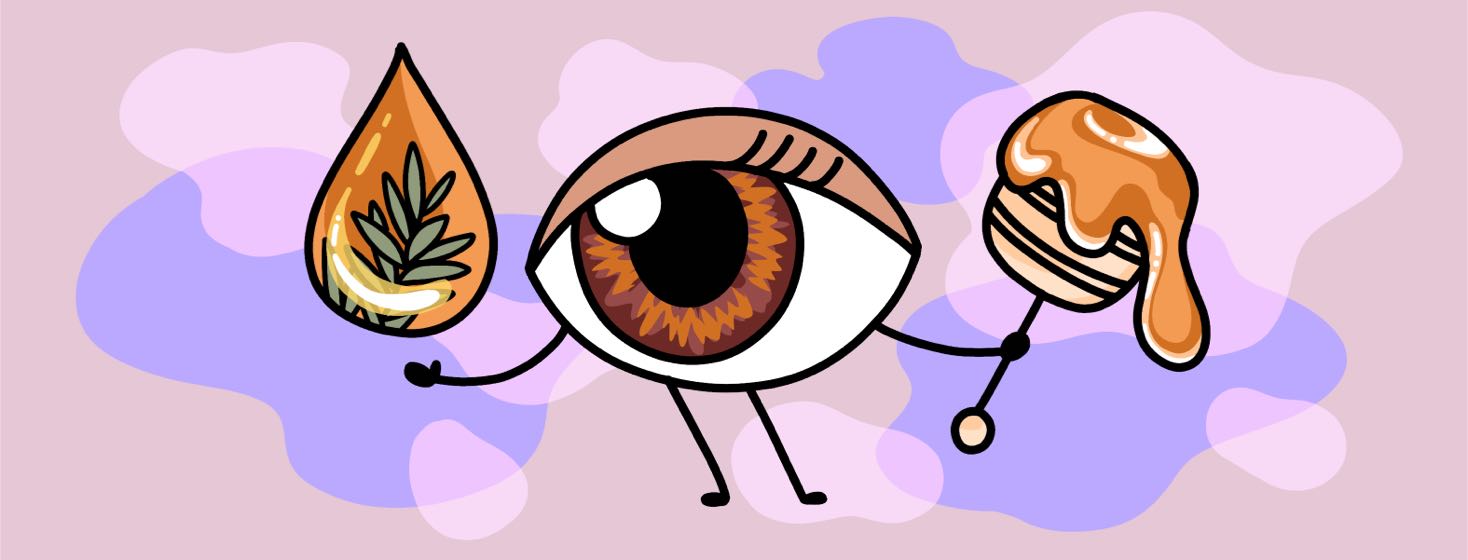My Experience Trying Home Remedies as Treatments for Blepharitis
One of the conditions I was initially diagnosed with that contributed to my chronic dry eye was blepharitis caused by demodex. If you’ve never heard of demodex, they are tiny mites that live on the skin and in hair follicles, feeding on dead skin cells. Unfortunately, for some of us, they can become overpopulated, causing damage to the oil glands in the eyelid margins, meibomian glands, and eyelashes.1
Treatments I tried
Tea tree oil
During my first appointment in which I was diagnosed with demodex, my doctor advised the use of several treatments. The first one involved an in-office tea tree oil treatment to initially get the mite population reduced. This involved her carefully applying a very strong concentration of tea tree oil directly to my lash line, followed by rinsing to prevent skin and eye irritation.
I found out very quickly that she wasn’t kidding about my left eyelid not closing properly – ouch!
After the in-office treatment, I was to follow this up at home using commercially-made tea tree oil wipes twice a day, morning and night. I’ve used them for quite a few years now and they seem to be the most effective treatment among home remedies I have tried to date.
Manuka honey
My doctor also recommended Manuka honey, applied with a single-use swab along the lash line right after the tea tree oil wipe and right before bed. She told me that the current thinking at the time was that the microorganisms in the honey may also help kill demodex and other bacteria.
It was a little difficult to work with, and it did leave some mess on my pillowcase, but not as bad as I thought it would be. I’m not sure if it helped reduce the demodex population, but it was soothing on my skin after all the scrubbing.
Hypochlorous acid spray
A few months later, my blepharitis was greatly reduced, but my eye doctor still saw too much demodex. Her next recommendation was to try a hypochlorous acid solution. At the time, the product being offered was prescription only, and many insurance companies didn’t cover it. I couldn’t justify the cost, but did find an over-the-counter alternative also containing hypochlorous acid.
My eye doctor told me some patients were able to spray it directly on their eyelids, but I had a hard time trying to get the spray concentrated along the lash line. The manufacturer's instructions note to spray it on a cotton ball or pad before applying it to the eyelids, but that seemed to waste a lot of product trying to get the cotton saturated enough. Overall, it seemed to work better than water alone, but I didn’t find much benefit over the tea tree oil wipes.
Foaming tea tree oil cleanser
There was a brief period when there was a supply issue with the manufacturer of the tea tree oil wipes, so my doctor recommended a tea tree oil foaming cleanser as a substitute for an eyelid cleanser. It’s supposed to be used to clean along the lash line and then be rinsed off.
I found that it wasn’t as effective for me used as a straight cleanser, but it was too irritating to leave on without rinsing. I settled on applying it to one finger and then diluting it with some water on my other finger, then swiping along my lash line without rinsing. This worked better, but still didn’t compare to the wipes.
Trying to keep symptoms of blepharitis under control
Being immunocompromised, demodex blepharitis isn’t something I’ve been able to clear up and move on from. I have at least been able to keep it more under control and am always interested in trying new options for the treatment of blepharitis. Time after time though, I always seem to go back to the wipes, mostly for their convenience, but also for their effectiveness.

Join the conversation